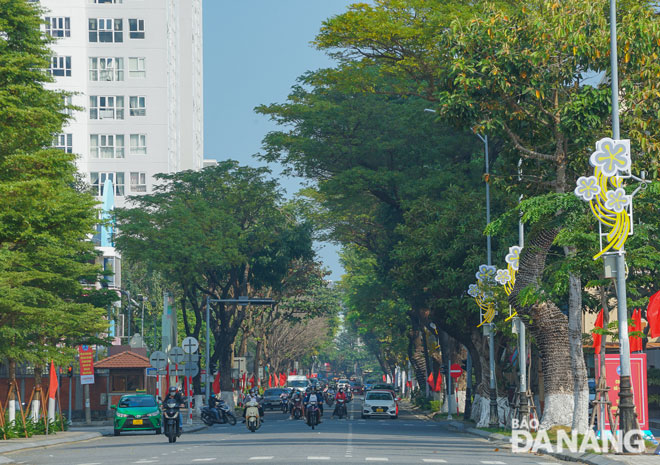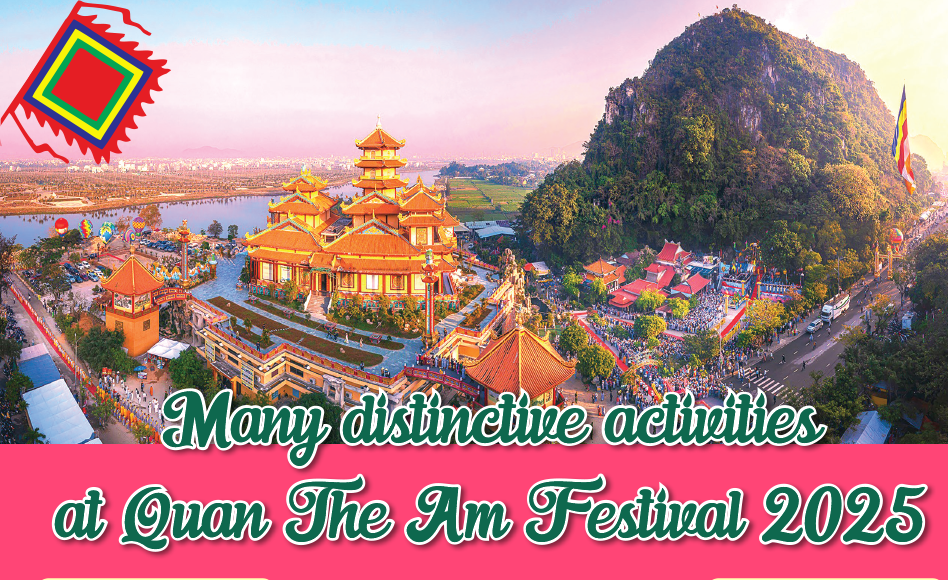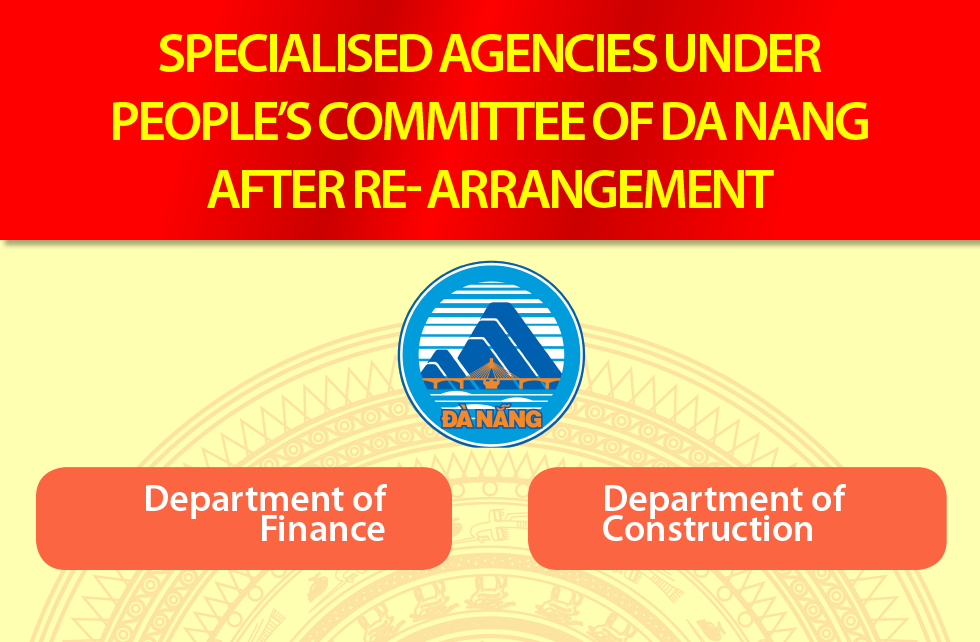Remarkable achievements gained by Da Nang in the years of the Dragon after the country's unification
After the country's unification in 1975, Da Nang has undergone four years of the Dragon: 1976, 1988, 2000, 2012 and now 2024. Most notably, Da Nang has gained remarkable achievements in these years. Da Nang's imprints in these years have been partly attributed to the municipal government's efforts to maximize the city’s available resources to drive its growth, and make it a key city in Central Viet Nam.
 |
| Given the strong determination and efforts of the municipal government along with the consensus of local people and the roadmap for development, Da Nang will turn itself into a best city in Viet Nam to visit and live. Photo: X.S |
- In the year of the Dragon 1976, Hoa Vang District, including the Hoang Sa Island District, districts 1, 2 and 3, was a district-level administrative unit of Quang Nam - Da Nang Province, of which, District 1 is the county unit. A number of large medical and educational facilities were established in District 1 at that time.
- On May 26, 1976, the Ministry of Health issued Decision No. 515 on establishing a hospital to provide healthcare service for officials in the Mid- Central Region, and the hospital kept its name of the Da Nang C Hospital unchanged as it was named by the Region 5 Party Committee. On October 27, 1976, the Prime Minister issued Decision No. 426 to establish the Da Nang University of Science and Technology with its campuses located in Hoa Khanh and Bac My An to provide training programs in engineering and economics, thereby laying an important foundation for the development of the present University of Da Nang.
- Also in the year of the Dragon 1976, the 11th Congress of the Quang Nam - Da Nang Provincial Party Committee took place on November 10, 1976 to elect a delegation of the Provincial Party Committee to attend the 1st National Party Congress of the Communist Party of Viet Nam for the 1976-1980 tenure which was held in the capital city of Ha Noi from December 14 to 20. In particular, in their efforts to practically welcome the first National Party Congress after the country's reunification, Da Nang’s fishermen transported two boats full of fish to Ha Noi to donate to the congress.
- In late 1976, our country's postal service issued a new set of stamps depicting the 1975 Spring General Offensive and Uprising that led to southern Viet Nam’s liberation and the country’s reunification, and these stamps were jointly designed by three artists namely Trinh Quoc Thu, Tran Luong and Tran Ngoc Uyen.
2. The Year of the Dragon 1988 was the year districts 1, 2, and 3 were merged together as Da Nang City in line with the Council of Government’s Decision No. 228 dated August 30, 1977, while Hoa Vang and Hoang Sa Island districts that was raised to district- level administrative unit of Quang Nam - Da Nang Province in line with the Council of Government’s Decision No. 194 dated December 9, 1982. The 8th Viet Nam Film Festival took place at the Trung Vuong Theater from March 15 to 22, 1988. The festival’s slogan was artistic creativity and the creation of new socialist citizens for the development of national cinema. This is the first time the national film festival has been held in a central city.
3. The Year of the Dragon 2000 was the year Da Nang that became a centrally-run city on January 1, 1997, welcomed in the new millennium as the Han River Bridge was inaugurated on March 29, 2000 that marked the time ferries, after decades of carrying people across the Han River, completed their historic mission. Since then, the city has changed gradually with a boom in high-rise buildings, apartments, and hotels on the east bank of the Han River. This bridge contributed significantly to the urbanization process on the east bank of the Han River, as well as laying the foundation for Da Nang to brand itself as the "city of bridges".
The Han River Bridge is unique in Viet Nam as it is the only swing bridge in the country, and its construction costs were partly contributed by local residents with an amount up to VND 7 billion. Two years after the Han River Bridge was inaugurated in Da Nang, it was featured on a new stamp series from the Viet Nam Postal Service. A set of stamps depicting Viet Nam’s beautiful bridges was released in 2002. Included were the Long Bien Bridge in Ha Noi, the Trang Tien Bridge in Thua Thien- Hue Province, the My Thuan Bridge connecting Tien Giang with Vinh Long, and the Han River Bridge in Da Nang. At the same time, the images of the Marble Mountains and the Han River Bridge were used as symbolisms in Da Nang’s logo designed by artist Nguyen Thuy Lien.
The Year of the Dragon 2000 was also the year the Da Nang government launched the ‘5 No’s’ programme, making it very different from other Vietnamese localities. Through the implemtation of this program, the city authorities aimed to reach the targets of no starving households, no illiterate people, no itinerant beggars, no drug-addicts in the community, and no murders for property in the city.
4. The Year of the Dragon 2012 was the year outstanding events related to the struggle to protect national sovereignty over its islands and sea, and quality healthcare delivery for local residents occurred in Da Nang. On November 23, 2012, Mr. Tran Thang, living in the U.S, donated 90 maps, 5 booklets and magazines proving Viet Nam's legitimate sovereignty over the Hoang Sa Islands to Da Nang in an active response to the call made by the Communist Party and the national government to defend the country's sovereignty and territorial integrity. These maps were published in China, the US and many European countries from 1626 to 1975. The latest were the maps of China's oil and minerals printed in 1949 , and they were reprinted by the US and published in 1975. These maps showed that Hainan Island is the southernmost point of the Chinese territory.
On April 13, 2012, the Obstetrics and Pediatrics Center of the Da Nang General Hospital was reorganized as the Da Nang Obstetrics and Pediatrics Hospital (also known as the 600-bed Hospital) under the management of the municipal Department of Health. It has been rated as the class 1 specialized hospital for women and children. Over the past decade, the hospital has been considered one of the high quality medical facilities in Central Viet Nam and Central Highlands.
In early 2017, Viet Nam’s first human milk bank opened at the Da Nang Hospital for Women and Children. Supported by the health ministry’s Maternal and Child Health Department, the Da Nang Department of Health, PATH and FHI 360 (through the Alive & Thrive initiative), the bank is able to provide lifesaving donor milk to 3,000 to 4,000 at-risk infants each year.
The Year of the Dragon 2012 is also the year construction was completed on the Da Nang Cancer Hospital under the Da Nang Association for Supporting Poor and Disadvantaged Women and Children. This hospital opened its doors to the public in early 2013.
In the Year of the Dragon 2024, Da Nang’s people take pride in their city’s international status as Da Nang has been voted into the list of the 11 best places to travel in Asia in 2024 by readers of Condé Nast Traveler, a reputable American tourism magazine, and the city ranked second on the list.
The Year of the Dragon 2024 is also the year Da Nang’s people identify the implementation of the city’s master plan for the 2021-2030 period, with a vision to 2050 as a key task in 2024 and the following years to transform their aspirations into reality to drive their city’s growth.
Given the strong determination and efforts of the municipal government along with the consensus of local people and the roadmap for development, Da Nang will turn itself into a best city in Viet Nam to visit and live.
Reporting by BUI VAN TIENG – Translating by H.L








